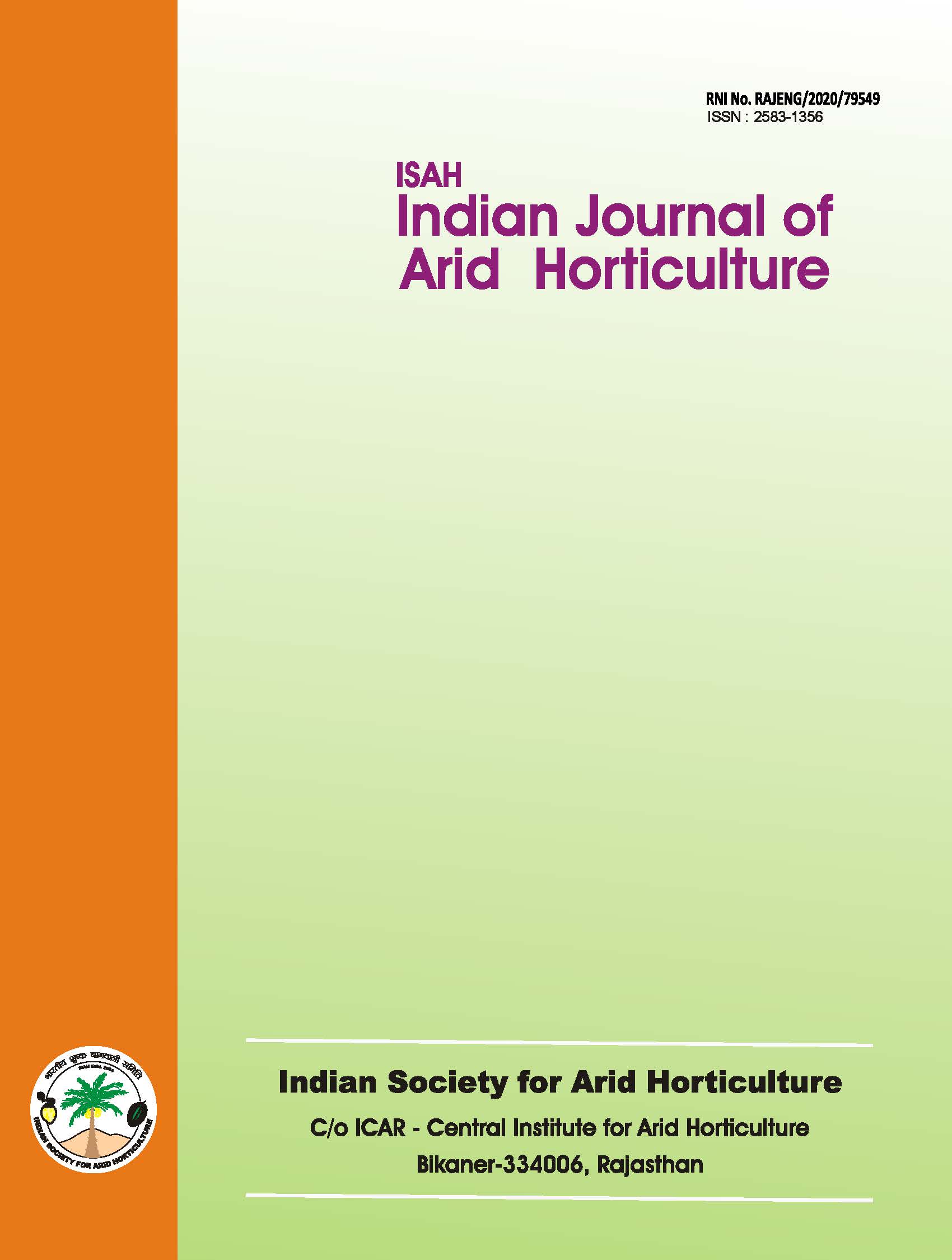Eco-friendly management of post-harvest fruit rot of Ber caused by Pestalotiopsis palmarum
Keywords:
pallidoroseum,, Fusarium solani, Pestalotiopsis, Zizyphus mauritiana Lamk, CladosporiumAbstract
Ber (Zizyphus mauritiana Lamk.) is one of the most ancient and common fruits consumed by people of India. It is often called the poor man's fruit. In India, ber is being cultivated on an area of about 87674 hectares with the production of about 8,94,848 million tonnes (Raturi, 2001). In Rajasthan, it is grown in an area of 959 hectares with annual production of 17038 tonnes fruit. (Anonymous, 2004). In market conditions a number of fungi causes rotting of ber fruits. The most frequently occurring fungi are Pestalotiopsis palmarum, Alternaria alternata, Cladosporium oxysporum, Rhizoctonia solani, Fusarium solani, Fusarium pallidoroseum, Phoma hisorensis, Rhizopus stolonifer, Colletotrichum sp. and Aspergillus niger. Average incidence of various fruit rotting diseases ranged from 2.00 to 15.30 per cent (Jat er al., 1997). The yield and quality of ber fruits are adversely affected by many diseases particularly powdery mildew and leaf spots. Nevertheless, fruit rots are also important problems of orchards and markets in arid and semi-arid regions. Ber fruit rots have been identified as major problem next to powdery mildew. Endemic forms of fruit rot diseases are persisting in western parts of Rajasthan (Nallathambi et al., 2000). Therefore, it was considered imperative to investigate the occurrence of various types of ber fruit rots caused by the Pestalotiopsis sp. and other fungi and their management in this part of Rajasthan.Downloads
References
Fruit were incubated at 25 +2°C
Anonymous. 2004. Vital Horticultural Statistics of Rajasthan, Directorate of Agriculture, Pant Krishi Bhawan, Rajasthan, Jaipur.
Godara, S.L. and Pathak, V.N. 1995. Effect of plant extracts on post-harvest rotting of sweet orange fruit. Global conference on "Advances in Research on Plant Diseases and their Management" held at RCA, Udaipur, Feb. 12 17, 172 pp. Grewal, R.C. 2000. Medicinal plants. Campus Books
International, New Delhi. 430 pp
Jat, R.G., Agarwal, V. K. and Goyal, S. K. 1997. Studies on post harvest fungal disease of ber fruits. Proceedings of Golden Jubilee International Conference on Integrated Plant Disease Management for Sustainable Agriculture, Indian Phytopathological Society, 11-15 Nov, IARI, New Delhi. 313 pp.
Kumar, S. 2002. Studies on post harvest fruit rots of ber
caused by Alternaria alternata and Aspergillus niger. M.Sc. (Ag.) Thesis, Rajasthan Agricultural University, Bikaner.
Meena, O. P. 2006. Studies on post harvest fruit rot of guava caused by Pestalotiopsis palmarum. M.Sc. (Ag.) Thesis, Rajasthan Agricultural University,
Bikaner.
Nallathambi, P., Umamaheswari, C., Vashistha, B.B. and
Nath, Vishal. 2000. Fruit rot (Alternaria alternata) and sources of resistance in ber germplasm under arid conditions. Ann. Arid Zone. 39(4):477-478.
Pandey, R. S., Bhargava, S. N., Shukla, D. N. and Dwivedi, D. K. 1983. Control of Pestalotiopsis fruit rot of guava by leaf extracts of two medicinal plants. Revista Mexicana de Fitopatologia, 2: 15 16. Raturi, G.B. 2001. Status Report on Arid Zone Fruits.
CIAH, Bikaner, 3 pp

